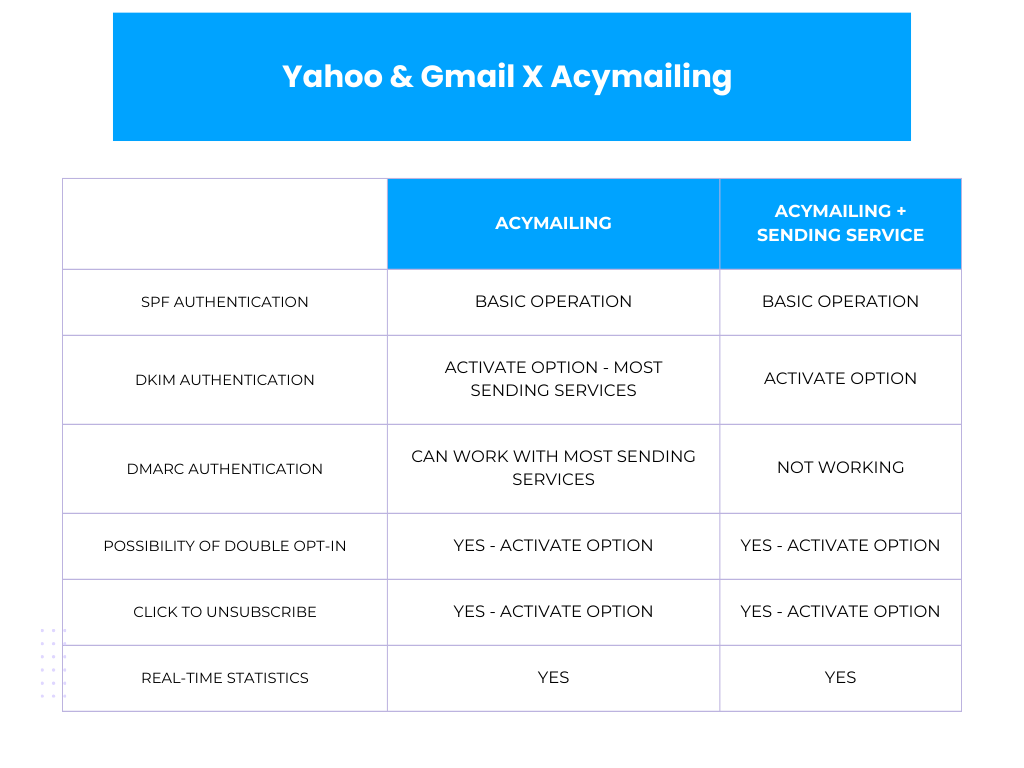As email platforms evolve, Gmail and Yahoo regularly introduce changes to their policies and requirements. Gmail has provided a detailed explanation indicating that implementation of the new standards will begin in February 2024. Similarly, Yahoo plans to implement its measures in the first quarter of 2024. These guidelines will apply universally to all senders, with more stringent criteria for “bulk emailers”.
These adjustments, designed to improve user experience and enhance security, significantly impact the way senders must approach their email marketing campaigns. In 2024, compliance with these new guidelines becomes crucial to ensuring message deliverability and maintaining a positive sender reputation.
In this guide, we’ll take a detailed look at the various facets of Gmail and Yahoo compliance. From domain authentication strategies to content optimization, from campaign segmentation to subscriber list management, every aspect will be explored to help you effectively navigate this ever-changing landscape.
Everyone is affected, especially bulk emailers!
A bulk mailer, often called a mass mailer or bulk emailer, refers to an entity or individual who sends a large number of emails simultaneously to a set of recipients. These bulk mailings can include newsletters, promotional announcements, regular updates, or other forms of electronic communications to a list of subscribers, customers or contacts.
How to prepare for these changes?
Domain authentication
- SPF (Sender Policy Framework) and DKIM (DomainKeys Identified Mail): Configure SPF to indicate which servers are authorized to send e-mail on your behalf. Implement DKIM to digitally sign your e-mails, guaranteeing their authenticity. Both measures help establish the sender’s legitimacy.
- DMARC (Domain-based Message Authentication, Reporting, and Conformance): Make sure your domain is configured with an appropriate DMARC policy. This reinforces outgoing e-mail authentication by specifying how authentication failures are to be handled.
Winning Strategies: Mastering List Management and Segmentation for Effective Campaigns
- Personalization: Segment your subscriber lists according to criteria such as past behavior, preferences, and demographics. Target specific messages to maximize relevance.
- Regular cleaning: Remove inactive addresses and check email validity.
- Double opt-in: A common practice in e-mail marketing, aimed at strengthening the quality of subscriber lists and ensuring more targeted, relevant communication. This method involves a two-step process when a user wishes to subscribe to a mailing list or newsletter.
- Respect unsubscribing: Respect unsubscribe requests to keep your lists clean.make it easy for them to unsubscribe, otherwise you risk receiving spam complaints. This Gmail and Yahoo! sender requirement will protect your sender reputation in the long term. The unsubscribe policy applies to e-mails that people need to subscribe to in the first place, such as e-mail marketing campaigns. It’s essential that the unsubscribe link is easily identifiable in the email. This is the minimum required by anti-spam law, a basic rule respected just about everywhere in the world. In fact, the CAN-SPAM law, which sets the standard for anti-spam legislation in the United States, follows these recommendations.
Testing, Monitoring and Rapid Response
- Simulation before mass mailing: Before launching your campaign on a large scale, carry out thorough tests with simulation tools. This will enable you to identify and resolve potential deliverability problems and prevent spam classification.
- Real-time statistical analysis: Use statistical analysis tools to monitor campaign engagement in real time. By reacting quickly to potential problems, you ensure proactive management, preserving the reputation of your mailings.
In conclusion, compliance with Gmail and Yahoo’s changing requirements in 2024 is crucial to maintaining optimal deliverability and avoiding being marked as spam.
By remaining proactive and constantly adjusting your practices, you can not only meet the ever-changing requirements, but also improve the overall quality of your email communications. A strategic, compliance-focused approach will not only help you maintain a positive sender reputation, but also maximize the impact of your marketing campaigns by creating lasting, meaningful interactions with your subscribers.
Ultimately, the key to success lies in proactively managing email policy updates and continually adapting your strategies to meet new requirements. By investing in compliance and staying abreast of best practices, you position your business for success in an ever-changing digital landscape. By building a reputation of trust with messaging providers, you ensure greater visibility and engagement from your audience, contributing to the sustainability and growth of your business.

Added Bonus
Encourage training for your team on the latest email marketing policies and best practices. Being informed reduces the risk of human error and encourages a more proactive approach aligned with current standards.
FAQ:
How can simulation before mass mailing help prevent potential deliverability and spam classification problems?
Simulation before mass mailing helps anticipate potential deliverability and spam classification problems by identifying technical errors, assessing the reaction of actual mail providers, optimizing content to avoid spam filters, and adapting to the specific policies of providers like Gmail and Yahoo!
How can subscriber list management help improve email deliverability in 2024?
Subscriber list management in 2024 helps to improve email deliverability by eliminating inactive addresses, reducing unsubscribes, enabling effective personalization and segmentation, complying with anti-spam rules, and ensuring regular cleansing to maintain a positive reputation.
also read : How to generate newsletter content with IA



